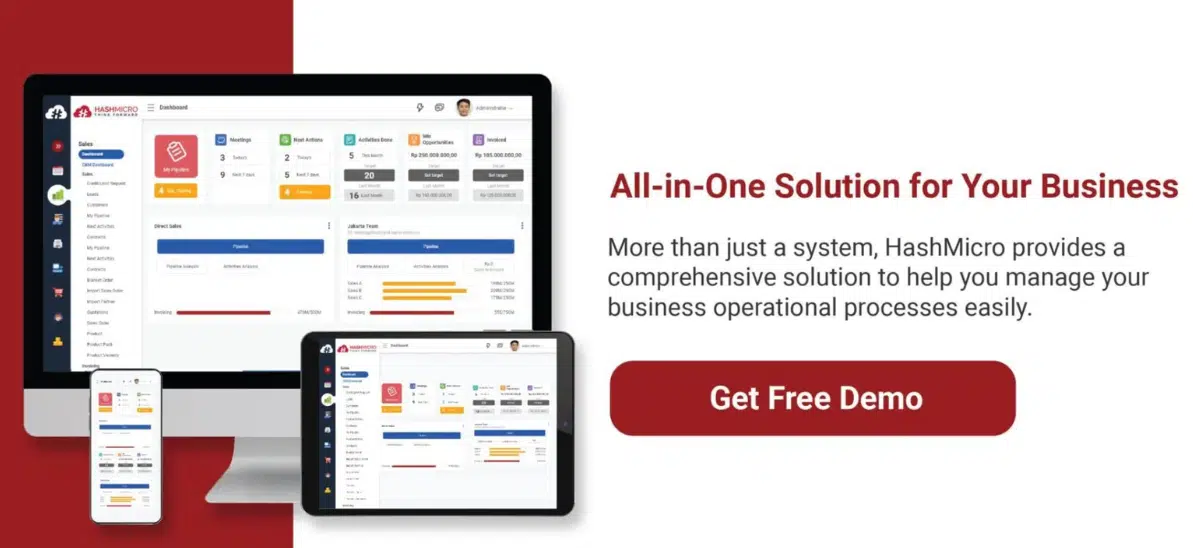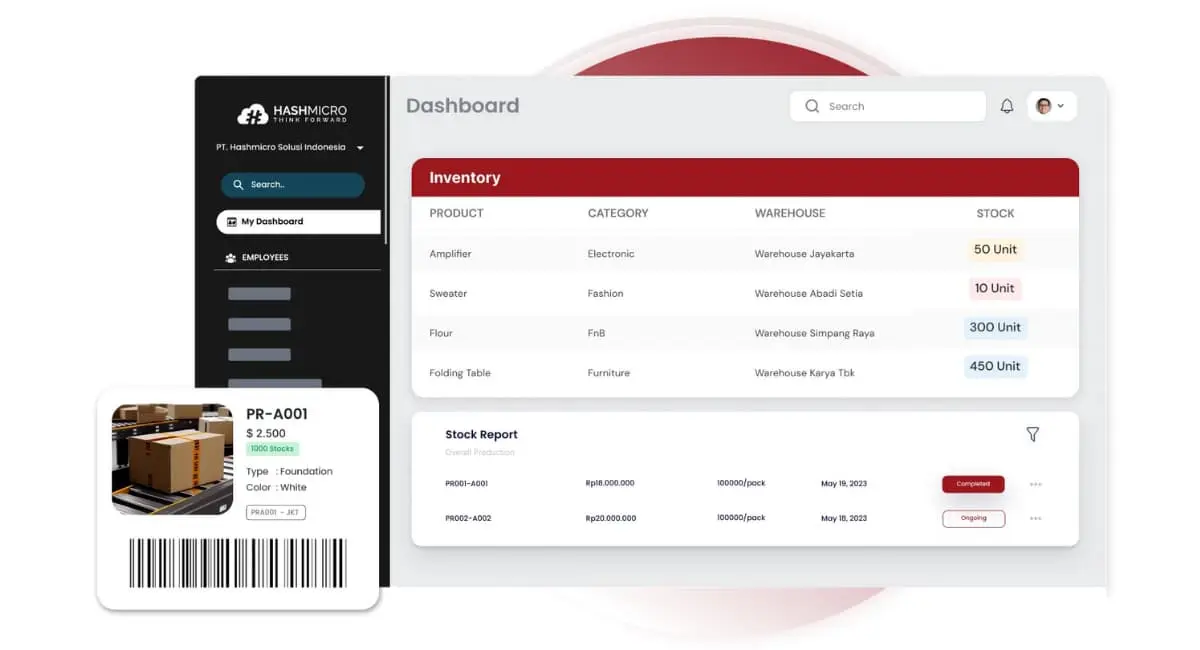In Singapore’s highly competitive retail market, effective inventory cost management is key to gaining a strategic edge. Retailers must consider inventory management, control, valuation, and costing methods to optimize their operations and stay ahead.
By addressing inventory carrying, holding, and control costs, businesses can strike a balance between supply and demand, minimizing expenses and ensuring customer satisfaction. Efficient inventory costing methods, such as FIFO or LIFO, also play a crucial role in accurate inventory valuation and informed decision-making.
By optimizing inventory costs, retailers can enhance profitability, improve operational efficiency, and boost their competitive position in Singapore’s dynamic market landscape. Effective inventory management practices reduce financial burdens associated with excess inventory, ensuring products are available when customers need them.
Table of Content:
Table of Content
Key Takeaways
|
The Challenges of Retail Optimization
Singapore’s retailers face the ongoing challenge of maintaining their market position while maximizing profitability. With the rise of ecommerce and omnichannel shopping, pricing decisions are more critical than ever. However, data challenges often hinder their ability to make strategic choices, impacting revenue, profits, and customer satisfaction.
One significant issue is the accuracy and sufficiency of data. Inaccurate or incomplete data makes it difficult for retailers to identify the right pricing strategies to boost sales and profitability. Additionally, the thin margins in retail emphasize the importance of precise pricing decisions, as even small adjustments can greatly affect profit margins.
To overcome these challenges, retailers can adopt dynamic pricing. This data-driven strategy enables them to adjust prices in real-time based on market demand, competition, and customer behavior. Dynamic pricing helps retailers optimize sales while staying competitive.
However, implementing dynamic pricing requires a robust data infrastructure. Retailers need to collect, process, and analyze data from various sources, including sales, customer behavior, and market trends. Advanced analytics and machine learning techniques are then used to interpret this data, identify pricing trends, forecast demand, and refine pricing strategies.
Importance of Inventory Management in Retail
Effective inventory management is vital for the success of any retail business in Singapore. By managing inventory efficiently, retailers can meet customer demand, minimize costs, and ensure a seamless shopping experience.
One of the key advantages of inventory management is improved customer satisfaction. When retailers have the right products in stock, customers can easily find what they need, leading to positive shopping experiences and increased brand loyalty.
Cost reduction is another significant benefit. By tracking stock levels and adopting strategies like just-in-time inventory, retailers can lower carrying costs associated with excess inventory, optimizing cash flow and profitability.
Inventory management also provides valuable insights into sales patterns and trends. By analyzing sales velocity, retailers can identify popular items and adjust ordering and restocking strategies accordingly, preventing stockouts or overstocking.
Additionally, effective inventory management enhances order fulfillment. Accurate stock tracking enables prompt and accurate order fulfillment, reducing order delays, backorders, or cancellations, and boosting customer satisfaction.
Types of Inventory and Inventory Management Systems
In the retail industry, managing inventory is crucial for ensuring smooth operations and meeting customer demand. Understanding the different types of inventory and implementing the right inventory management systems can help businesses optimize their inventory levels and minimize costs. Let’s explore the various types of inventory and the inventory management systems commonly used in retail.
Types of Inventory
1. Raw Goods: This type of inventory includes the materials and components that are used in the production process. Raw goods are essential for manufacturing products.
2. Work-in-Progress: Work-in-progress inventory consists of partially completed products that are still undergoing various stages of manufacturing. This inventory represents the value of the labor and materials invested in the production process.
3. Finished Goods: Finished goods inventory comprises fully completed products that are ready for sale to customers. This inventory represents the final output of the manufacturing process.
4. MRO Goods: MRO stands for Maintenance, Repair, and Operations. MRO goods inventory includes supplies and materials that are necessary for maintaining equipment, repairing machinery, and supporting day-to-day operations.
Inventory Management Systems
To effectively manage inventory, businesses utilize different inventory management systems. The choice of inventory management system depends on the nature of the business and its specific requirements. Here are three commonly used inventory management systems:
1. Perpetual Inventory System: This system maintains a real-time, up-to-date record of inventory levels using technology such as barcode scanning and RFID tracking. It provides accurate visibility into stock levels, enables automatic reorder points, and facilitates efficient inventory tracking.
2. Periodic Inventory System: In this system, physical inventory counts are conducted periodically. It involves manually counting and recording the stock levels at certain intervals. While it may be less accurate than a perpetual system, it is still used by some businesses due to its simplicity and lower technology costs.
3. Manual Inventory System: This system relies on manual processes, such as pen and paper or basic spreadsheets, to track inventory. It is often used by small businesses with limited inventory and resource constraints.
Implementing the right inventory management system is essential for maintaining optimal stock levels, preventing stockouts, and avoiding excess inventory. The choice of system depends on factors such as the size of the business, the complexity of the inventory, and the available resources.
By understanding the types of inventory and choosing the appropriate inventory management system, businesses in Singapore can effectively track, manage, and optimize their inventory levels, leading to improved operational efficiency and cost savings.
Inventory Management Techniques
Optimizing inventory cost is crucial for businesses in the Singapore retail market. Implementing effective inventory management techniques can help streamline operations, reduce expenses, and improve overall profitability.
Here’s a concise list of the inventory management techniques mentioned:
- Six Sigma: Data-driven methodology that eliminates defects and reduces variations in inventory processes, improving efficiency and control.
- Setting Par Levels: Determines the minimum stock quantities to meet demand, preventing stockouts and optimizing inventory levels.
- First In First Out (FIFO): Oldest inventory items are sold or used first, reducing spoilage and obsolescence risks.
- Supplier Relationship Management: Fostering strong relationships with suppliers for better pricing, timely deliveries, and reliable supply chain management.
- Contingency Planning: Developing backup plans to mitigate potential disruptions in the supply chain, ensuring business continuity, and minimizing financial losses.
- Regular Auditing: Ensures the accuracy of inventory records and helps identify issues like stock shrinkage or process inefficiencies.
- ABC Analysis: Categorizes inventory by value and consumption frequency, allowing for prioritized management and optimized costs.
- Accurate Forecasting: Predicts future demand using historical data and trends to align inventory levels with customer needs.
- Last In First Out (LIFO): Newest inventory items are used first, though it may carry higher risks of stock obsolescence.
- Just-in-Time Approach: Minimizes holding costs by receiving and using inventory as needed, improving cash flow management and reducing obsolescence risks.
Implementing these inventory management techniques can significantly optimize your inventory cost in the Singapore retail market. By adopting a strategic and data-driven approach, you can gain a competitive advantage, improve profitability, and ensure customer satisfaction.
How to Calculate Inventory Cost
Understanding inventory costs is crucial for businesses that manage stock, whether they are wholesalers, retailers, or manufacturers. Inventory costs impact profitability and cash flow, so calculating them accurately helps businesses make better financial and operational decisions. Generally, inventory costs consist of three key components: capital costs, handling costs, and risk costs. Here’s how each of them affects your business and how to calculate them effectively.
1. Capital Costs
Capital costs refer to the money a company spends to finance its inventory. This could come from loans, investor funds, or company equity. Since borrowed money isn’t free, businesses need to consider interest rates or expected returns when calculating inventory costs. A common way to measure this is by using the Weighted Average Cost of Capital (WACC), which factors in the cost of debt and equity financing.
2. Handling & Holding Costs
Handling costs include expenses related to storing, picking, packing, and transporting inventory. These costs can be variable or fixed. Variable costs change based on inventory levels—like storage fees per pallet in a third-party warehouse—while fixed costs remain constant, such as warehouse lease payments and salaries of warehouse staff. A practical way to estimate these costs is by determining the percentage of the total inventory value allocated to storage and logistics expenses.
3. Inventory Risk Costs
Inventory risk costs cover potential losses due to factors like obsolescence, spoilage, theft, or damage. Businesses typically estimate these costs by analyzing historical data on inventory depreciation and insurance expenses. For example, if a company writes off 5% of its inventory value annually due to unsellable stock, that percentage should be factored into overall inventory costs.
Example Problem
A retail company holds an average inventory worth $500,000 per year. The company’s WACC is 8%, handling costs are estimated at 10% of inventory value, and inventory risk costs are around 5% annually.
Question: Calculate the total inventory cost for the company!
Solution:
- Capital cost = 8% × $500,000 = $40,000
- Handling cost = 10% × $500,000 = $50,000
- Risk cost = 5% × $500,000 = $25,000
Total Inventory Cost = $40,000 + $50,000 + $25,000 = $115,000 per year
By understanding and calculating these costs, businesses can make informed decisions about inventory levels, pricing strategies, and supply chain efficiency.
Inventory Management Tips for Retail
Effective retail inventory management is crucial for maintaining profitability and ensuring smooth operations in a retail business. By implementing the right strategies and best practices, you can prevent spoilage, minimize dead stock, reduce storage costs, improve cash flow, and optimize order fulfillment. Here are some practical tips to help you streamline your inventory management processes:
1. Spoilage Prevention
One of the key challenges in inventory management is preventing spoilage. This can occur when perishable goods, such as food or cosmetics, exceed their expiration dates. To avoid spoilage, implement a first-in, first-out (FIFO) system, where products with the nearest expiration dates are sold first. Regularly monitor and rotate your inventory to ensure that older products are used or sold before newer ones.
2. Dead Stock Avoidance
Dead stock refers to products that remain unsold for a long period of time, tying up valuable resources and storage space. To avoid dead stock, conduct regular inventory audits to identify slow-moving items. Consider implementing sales promotions, discounts, or bundling options to clear out stagnant inventory. Additionally, analyze customer demand and market trends to make informed purchasing decisions and avoid overstocking unpopular products.
3. Storage Cost Reduction
Reducing storage costs is essential for optimizing inventory management. Evaluate your storage space and consider alternative options, such as utilizing third-party warehouses or implementing a just-in-time inventory approach. By adopting efficient space utilization techniques, implementing proper shelving systems, and leveraging smart storage solutions, you can optimize your storage capacities, reduce costs, and improve overall efficiency.
4. Cash Flow Improvement
Inventory ties up valuable capital, impacting cash flow. To improve cash flow, focus on maintaining optimal inventory levels. Avoid overstocking by accurately forecasting customer demand and adjusting your purchasing patterns accordingly. Implement effective supplier relationship management strategies to negotiate favorable payment terms, discounts, or consignment agreements. By optimizing cash flow, you can allocate resources towards other business needs, such as marketing or expansion projects.
5. Order Fulfillment Optimization
Efficient order fulfillment is crucial for customer satisfaction and repeat business. Implement robust order management systems or leverage cloud based inventory software to keep track of customer orders, monitor stock levels in real-time, and streamline fulfillment processes. Set par levels based on historical sales data and adjust them to meet market demand. Regularly review your order fulfillment processes and make necessary improvements to ensure timely and accurate shipments.
Simplify Your Inventory Management with HashMicro’s Inventory Management Software
HashMicro’s Inventory Management Software provides real-time insights into your inventory, helping you track stock levels, movements, and replenishments effortlessly. By automating stock management, you can reduce errors, prevent shortages, and optimize overall inventory control.
With advanced forecasting and seamless tracking, HashMicro’s solution ensures that you always have the right stock at the right time. This powerful system helps businesses minimize waste, streamline warehouse operations, and improve decision-making with accurate inventory data.
The following are the features of HashMicro’s Inventory Management Software:
- Seamless Inventory Tracking: Manage and monitor stock movements efficiently, whether transferring between warehouses or outlets, ensuring accurate inventory control.
- Optimized Stock Levels: Get low stock notifications and future demand forecasts to maintain optimal inventory levels and prevent overstocking or shortages.
- Operational Dashboard: Access a centralized dashboard that provides real-time insights into stock availability, internal transfers, and stock-in and stock-out processes.
- Minimized Waste: Enhance inventory turnover by prioritizing the sale of older stock first, reducing excess inventory and preventing product obsolescence.
Conclusion
Inventory management is a critical aspect of any retail business, and in a competitive market like Singapore, efficient inventory control can set businesses apart. HashMicro’s inventory management software is designed to streamline and revolutionize inventory processes.
With its comprehensive features, retailers can optimize their inventory, gain valuable insights, and make data-driven decisions. The software simplifies inventory tracking, automates replenishment, and enhances demand forecasting accuracy.
HashMicro’s solution ensures seamless order fulfillment, helping retailers stay ahead of the competition and providing an exceptional customer experience. With its advanced technology and intuitive interface, HashMicro’s inventory management software is the ideal choice for Singapore businesses seeking to optimize their operations and gain a competitive edge.
Try the free demo now!
Pertanyaan Seputar Inventory Cost
-
What is the inventory cost analysis?
Inventory cost analysis refers to the process of evaluating and calculating the expenses associated with maintaining and managing inventory within a business.
-
What does inventory value cost mean?
Inventory value is the total monetary worth of a business’s goods and materials held in stock and available for sale. Calculating inventory value is essential for financial reporting, tax purposes, and managing various aspects of the business, including cash flow, profitability, and overall financial health.
-
What are inventory out costs?
Stockout cost refers to the total expense of an inventory shortage including lost revenue. A stockout can be especially harmful to your business if the shopper is a first-time customer.






































